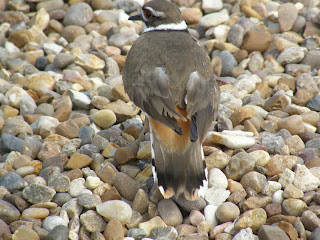Do you have "good taste"? You are invited to attend a honey-tasting, at BirdFest Texoma, on Sunday afternoon, May 5, at Hagerman National Wildlife Refuge. A Friends of Hagerman member and Visitor Center
volunteer, Barbara Corbin, is arranging this opportunity for you to test your
taste buds. Barbara, who is a long-time Collin County beekeeper, will have 12 – 15 floral honeys for you to sample at this free event to be held in the Visitor Center at Hagerman National Wildlife Refuge. A handout will list the floral honeys
present; honey samples will be numbered, and
you will try to match the honey to its floral source. Crackers, water, cups and
other supplies will be available to clean the palate between honey samples.
You will also get to meet and visit with the Texas Honey
Queen, Shelby Kilpatrick, shown above. As an official
spokesperson for the Texas Beekeepers Association, the Texas Honey Queen
promotes all aspects of the beekeeping industry. Shelby is a senior in high school and is home
educated along with her two younger sisters. She began beekeeping in 2007 when
she received a Youth Beekeeping Scholarship from the Collin County Hobby
Beekeepers Association. Since then, beekeeping has become a family project. In
addition to beekeeping, Shelby is an active Denton County 4-H member, a
certified Denton County Master Gardener and an Elm Fork Chapter Master
Naturalist Intern.
While honey is the best known bee
product, it has been estimated that 30% of our food supply depends on bee-pollinated
plants, not to mention the importance of pollination to plants for feeding livestock. (http://beespotter.mste.illinois.edu/topics/economics/) In addition to the
tasting table, there will also be a display and handouts with information about bees,
honey and the beekeeping industry.
Advance registration is recommended
for this program, to guarantee that you will get to taste. You can register online at www.birdfesttexoma.org, or download a
form to mail; forms are also available at the Refuge. Come learn about the honey bee, pollination
and the sweet gift of honey at BirdFest Texoma!
.














